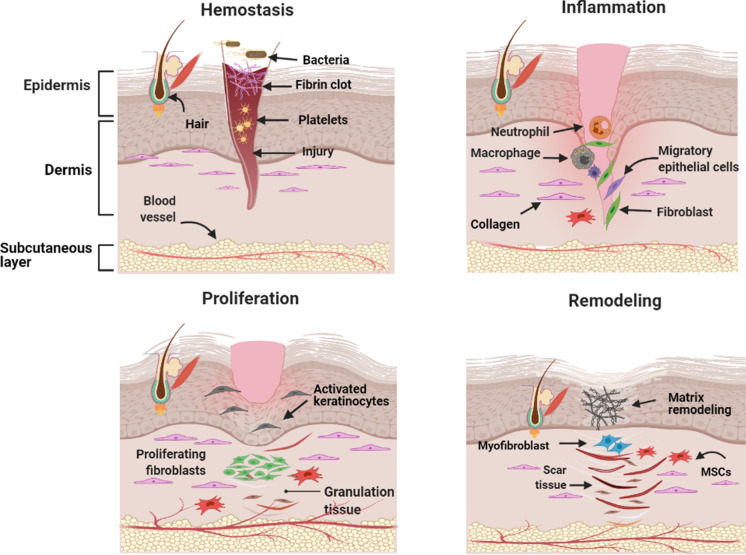Fig. 1.
The four phases of wound healing. It starts with hemostasis, where blood loss is prevented by platelet plug and fibrin matrix formation. The inflammation phase ensures the removal of dead cell debris and prevents further infection after neutrophil influx (stimulated by histamine release from the mast cell). Monocytes also get differentiated into macrophages to clear leftover dead cells and neutrophils around the wounded area. In the proliferative phase, various cascade culminates, such as keratinocytes migrate to seal the wound; angiogenesis starts for new blood vessel formation, and fibroblast triggers granulation tissue formation. Finally, fibroblast, blood vessels, MSCs, and myofibroblasts trigger tissue remolding, resulting in complete wound closure

